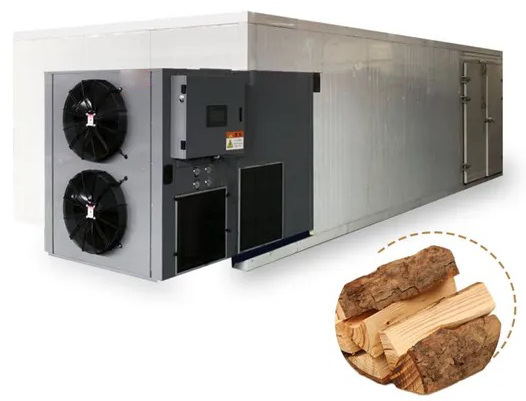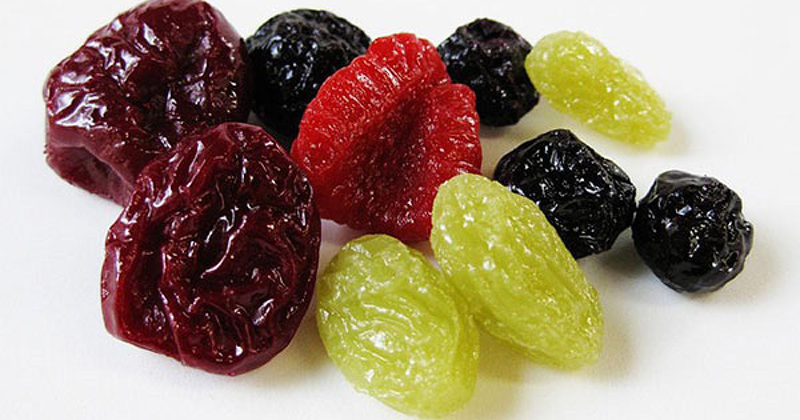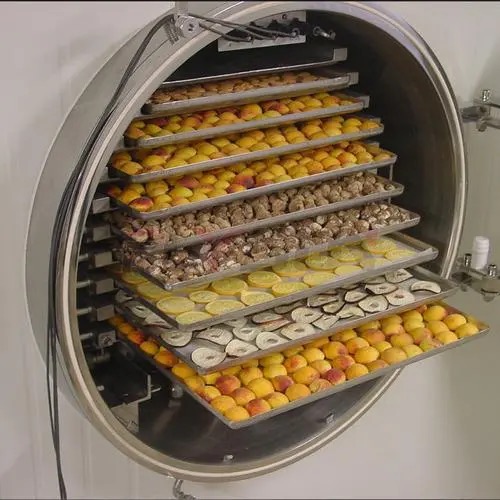
Content Menu
● Understanding Heat Pump Condenser Dryers
>> How Heat Pump Technology Works
● Benefits of Using Heat Pump Condenser Dryers
● Energy Savings Explained
● Applications in Food Drying
>> Advantages of Heat Pump Food Dryers
● Detailed Comparison with Traditional Dryers
● Innovations in Heat Pump Technology
● Real-Life Applications of Heat Pump Technology
>> Case Study: Food Processing Industry
● Conclusion
● FAQ
>> 1. What is a heat pump condenser dryer?
>> 2. How much energy can I save with a heat pump dryer?
>> 3. Can I use a heat pump dryer for food drying?
>> 4. Are heat pump dryers more expensive than traditional ones?
>> 5. How long does it take to dry clothes with a heat pump dryer?
● Citations:
In recent years, energy efficiency has become a significant concern for both consumers and manufacturers. With rising energy costs and increasing awareness of environmental issues, the demand for energy-efficient appliances, including dryers, has surged. Among these, the heat pump condenser dryer stands out as a revolutionary solution that not only saves energy but also enhances drying performance. This article explores the functionality of heat pump condenser dryers, their benefits in terms of energy savings, and their applications in various sectors, including food drying.

Understanding Heat Pump Condenser Dryers
Heat pump condenser dryers utilize a unique technology that sets them apart from traditional dryers. Unlike standard dryers that vent hot air outside, heat pump models recycle air within the machine. They use a refrigerant system to absorb moisture from the clothes and then expel dry air back into the drum. This process significantly reduces energy consumption.
How Heat Pump Technology Works
1. Moisture Extraction: The dryer draws in humid air from the drum.
2. Heat Exchange: The humid air passes through an evaporator where it cools down, causing moisture to condense.
3. Heating: The refrigerant absorbs this moisture and is then compressed to heat it up.
4. Recycling Air: The hot air is circulated back into the drum to continue drying the clothes.
This cycle repeats until the desired moisture level is reached, making it an efficient method for drying.
Benefits of Using Heat Pump Condenser Dryers
Heat pump condenser dryers offer numerous advantages over traditional drying methods:
- Energy Efficiency: They consume significantly less energy, often using up to 50% less than conventional dryers.
- Gentle Drying: The lower drying temperatures are gentler on fabrics, reducing wear and tear.
- No Venting Required: They can be installed in various locations without needing external venting systems.
- Environmental Impact: Reduced energy consumption leads to lower carbon emissions, making them a more sustainable choice.
Energy Savings Explained
The primary reason consumers are gravitating towards heat pump condenser dryers is their ability to save energy. Here's how they achieve this:
- Lower Operating Temperatures: Traditional dryers operate at high temperatures, which require more energy. Heat pump dryers operate at lower temperatures, minimizing energy use while still effectively drying clothes.
- Recycling Energy: By recycling heat within the system, these dryers make better use of the energy they consume.
- Longer Drying Cycles: Although they may take longer to dry clothes compared to traditional models, the reduced energy consumption during these cycles results in overall savings.
Applications in Food Drying
The principles of heat pump technology are not limited to fabric drying; they can also be applied in food processing industries. Food drying is an essential process that enhances shelf life and preserves nutritional value. Here's how heat pump technology can benefit food drying:
Advantages of Heat Pump Food Dryers
- Consistent Temperature Control: Heat pump food dryers maintain a stable temperature throughout the drying process, ensuring uniform results.
- Energy Efficient: Similar to clothing dryers, heat pump food dryers consume less energy compared to traditional methods like sun drying or hot air drying.
- Preservation of Nutrients: Lower temperatures help retain vitamins and minerals in food products.
- Flexibility in Operation: These dryers can operate in various conditions without compromising efficiency.

Detailed Comparison with Traditional Dryers
To further understand the advantages of heat pump condenser dryers over traditional models, let's compare them across several key factors:
| Feature | Traditional Dryer | Heat Pump Condenser Dryer |
| Energy Consumption | High | Low |
| Operating Temperature | High | Low |
| Installation Requirements | Requires venting | No venting required |
| Fabric Care | Can be harsh on fabrics | Gentle on fabrics |
| Environmental Impact | Higher carbon footprint | Lower carbon footprint |
| Cost Efficiency | Lower initial cost | Higher initial cost but lower long-term costs |
This table highlights how heat pump condenser dryers excel in energy efficiency and environmental impact while providing gentle care for fabrics.
Innovations in Heat Pump Technology
The evolution of heat pump technology continues to advance with innovations aimed at improving performance and user experience. Some notable developments include:
- Smart Technology Integration: Many modern heat pump dryers come equipped with smart technology that allows users to control settings via smartphone apps. This feature enables remote monitoring and scheduling of drying cycles for added convenience.
- Enhanced Moisture Sensors: Advanced moisture sensing technology ensures that clothes are dried precisely to the desired level of dryness, preventing over-drying and saving additional energy.
- Eco-Friendly Refrigerants: Manufacturers are increasingly using eco-friendly refrigerants that minimize environmental impact while maintaining high efficiency levels.
Real-Life Applications of Heat Pump Technology
Heat pump technology has found applications beyond just home laundry solutions. In commercial settings, such as laundromats and textile industries, these machines provide significant cost savings on utility bills while meeting high-volume demands. Additionally, in food processing plants, heat pump food dryers are becoming essential tools for preserving fruits, vegetables, and herbs without compromising quality.
Case Study: Food Processing Industry
In a recent case study involving a mid-sized fruit processing facility, switching from conventional hot air drying methods to a heat pump food dryer resulted in:
- A 40% reduction in energy costs.
- Improved product quality with higher retention of vitamins and flavors.
- Increased production capacity due to faster turnaround times without sacrificing quality.
This example illustrates how adopting heat pump technology can lead to substantial operational improvements and cost savings for businesses.
Conclusion
Heat pump condenser dryers represent a significant advancement in drying technology, offering substantial energy savings while maintaining high performance. Their application extends beyond laundry into food processing, showcasing their versatility and efficiency. As consumers become increasingly aware of their environmental impact and seek ways to reduce energy consumption, heat pump technology will likely become more prevalent in households and industries alike.
In summary, investing in a heat pump dryer not only benefits individual households through reduced utility bills but also contributes positively to global sustainability efforts by lowering overall energy consumption and carbon emissions.

FAQ
1. What is a heat pump condenser dryer?
A heat pump condenser dryer is an appliance that uses a refrigeration cycle to dry clothes by recycling warm air within the machine instead of venting it outside. This method is more energy-efficient than traditional dryers.
2. How much energy can I save with a heat pump dryer?
Heat pump dryers can save up to 50% more energy compared to conventional vented dryers due to their lower operating temperatures and recycling of warm air.
3. Can I use a heat pump dryer for food drying?
Yes, heat pump technology is applicable in food drying processes as it allows for consistent temperature control while being energy-efficient and preserving nutritional value.
4. Are heat pump dryers more expensive than traditional ones?
While the initial purchase price of heat pump dryers may be higher than traditional models, their long-term savings on energy bills often make them a more cost-effective choice over time.
5. How long does it take to dry clothes with a heat pump dryer?
Heat pump dryers typically have longer drying cycles than conventional models; however, they are designed to be efficient and use less energy during these cycles.
Citations:
[1] https://www.ikemachinery.com/industrial-dehydrator/large-scale-commercial-fresh-food-container-dehydrator.html
[2] https://www.youtube.com/watch?v=0_IMnnF10Po
[3] https://www.goodhousekeeping.com/appliances/a31904157/what-is-a-dehydrator/
[4] https://www.istockphoto.com/photos/food-dehydrator
[5] https://www.youtube.com/watch?v=mtDzdYoyeR8
[6] https://www.benchfoods.com/products/60-tray-dehydrator
[7] https://pocketchangegourmet.com/how-does-a-dehydrator-work/
[8] https://www.webstaurantstore.com/guide/741/food-dehydrators-buying-guide.html
[9] https://www.youtube.com/watch?v=rR2G5UO-5Ms
[10] https://www.ikemachinery.com/cabinet-food-drying-machine/medium-capacity-cabinet-food-dryer-for-fruit-and-meat.html











